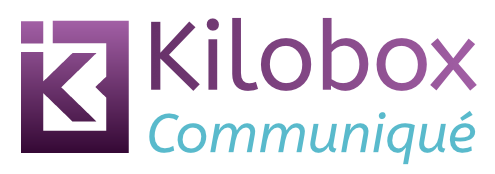Hi, my handle’s ZenMom and I’m today’s guest writer at Wedge’s kilobox blog.
Most of my professional writing is ‘boring‘.

Hey, wake up! It’s not as bad as it sounds. In fact, it can have it’s own kind of beauty, if you approach it that way.
It’s easy to see the beauty of the written word in a poem or story or novel. It can be harder to recognize in more ‘practical’ writing. Because, if you do it right, it should be invisible.
In art, you want your audience to see the painting – not the paint. In music, they should hear the composition, not the notes.
And in writing, you want your reader to focus on your message, not your words. You want your reader to be simultaneously moved by, and yet not distracted by, your words.
But the irony is that to achieve that goal, the writer has to be hyper-conscious of those words.
“The difference between the right word and the almost right word is the difference between the lightning and the lightning bug.” ~ Mark Twain
It’s a kind of technical beauty. The artistry is in the details: what you leave in, what you take away; the nuances implied by the right word choice; the emotions evoked by the right pacing; the senses stimulated by the right details.
All of those details – those choices on the part of the writer – build a connection between the writer and the reader – and there is very little that is more beautiful than that moment when people connect, when we understand and feel understood.
That connection is the real goal – the real beauty.
Even ugliness can be written about beautifully. The horrors of war, abuse, tragedy, suffering – a passionate, talented writer can make even those terrible subjects resonate with the reader in a powerful, meaningful way by making the reader feel them. And, again, there is a kind of beauty in that connection.
But what about the ‘boring’ stuff? Is it really possible to build beauty into an annual report or a new product announcement or a technical manual? I guess that depends on your definition of beauty.
It’s still about choices – the right words in the right places at the right times – but it’s also about understanding and accepting the project for what it is.
If an artist is painting an ant hill and tries imbue it with the majesty of Kilimanjaro, the results will be … not right. But if she recognizes that the ant hill has an inherent beauty and purpose of it’s own, she has a better chance of capturing that beauty on her canvas.
If you try to make your annual report into poetry, you will miss the chance to make it beautiful, to make the right choices for that communication – to make that all important connection with your reader.
You can’t make it glamorous, but the passionate writer can make it right.
Words are, of course, the most powerful drug used by mankind.” ~ Rudyard Kipling
If you think about it, the power of written communication is pretty awe-inspiring all by itself.
This blog is a perfect example: You’re reading the results of the collaboration of a public relations professional in California and an internal communications manager in England.
Wedge and I have never spoken a single word to each other. But we’ve communicated complex ideas over vast distances and developed a productive and pleasing cross-continental relationship.
That’s pretty amazing, don’t you think?
And yet so many of us take these connections for granted every day.
When we do think about them, we give credit to ‘the Internet’. But the Internet is only the medium – the canvas. The real beauty is in the power of the written word.
Like art, music, dance … written communication is a concept unique to humankind. It is, perhaps, an imperfect means of communicating the complexity of human thoughts and knowledge and emotions. But it is still the most powerful tool we have for making those all important human connections.
A picture may be worth a thousand words, but the right thousand words – they have the potential to take us places we could never go without them – and that is beautiful.
[ZenMom]I can be seen around kilobox communiqué and the web, and I’m actively involved with writing, blogging and community building. You can read my work over at Finding My Balance.
Photo credit: kevin dooley
If you’d like to share or tweet this article from ZenMom, the short URL is: http://kilobox.net/1805









It’s lovely to see another article from you and I couldn’t agree more with everything you say. I think it’s too easy to forget, when we’re focused simply on communicating, that writing is such a beautiful and powerful art form.
I particularly love your ending statement, and with your permission I’d like to add it to my list of favourite quotes :)
Thank you for sharing such an inspiring article.
Yes, yes, a thousand times yes! I was just blogging about the same thing. (http://pointsofrue.posterous.com/just-stop-it-of-course-communicators-need-to) But you have articulated it much more effectively than I did in my frustration of the moment. Too often we fail to appreciate the power of writing even the most “boring” and corporate of content. We think it’s not writing because “it’s business” and that’s just wrong.
Well said, my friend.
So, is this where you’ve been hanging out instead of your “old” blog?
Making boring beautiful, eh? I’m down with this advice!
Excellent post as always.
Love it, Zen. It sounds like you’re saying that no matter what we’re writing, if it’s if boring or perfunctory, we have no one but ourselves to blame. And I agree.
Nicely done. A well crafted post/essay/story is a thing of beauty.